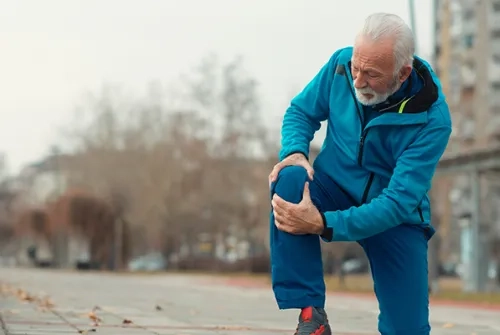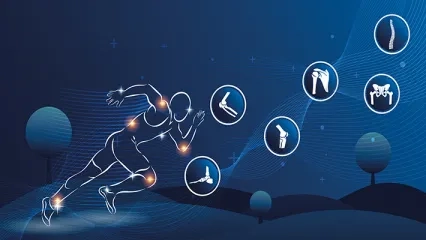Alo Yeditepe
Alo Yeditepe
Treatment of Knee Arthrosis Varies According to the Person
Although knee arthrosis, known as knee calcification in the society, is known as an elderly disease, it can occur at any age. Expressing that knee arthrosis does not appear suddenly, Orthopedics and Traumatology specialist Prof. Dr. Hasan Bombacı stated that arthrosis has a long development process which lasts 10-15 years and warned that measures should be taken against it at an early age.
Arthrosis is a problem that greatly affects daily life and working life, especially in advanced stages. Knee arthrosis, which is considered in the category of diseases due to the body's inability to adapt to modern life, is therefore considered in the “diseases of incompatibility” group. Saying that there are studies showing that the incidence of knee arthrosis has increased significantly in the industrial age, Yeditepe University Koşuyolu Hospital’s Orthopedics and Traumatology specialist Prof. Dr. Hasan Bombacı pointed out that although it is known as an elderly disease in the society, knee arthritis can occur at any age.
Prof. Dr. Hasan Bombacı has said that a sedentary lifestyle, obesity, metabolic diseases, excessive smoking and especially sports activities made without reasonable knowledge cause the body to wear out and cause cartilage to deteriorate in the earlier period.
There are controllable and uncontrollable causes of knee arthrosis
Noting that the two most important known risk factors are aging and obesity, Prof. Dr. Hasan Bombacı stated that aging is not a preventable risk factor, but obesity is a risk factor that can be taken precautions even though it is a difficult situation to deal with. "In other words, although it is not possible for us to affect some of the factors that predispose to knee arthrosis, it may be possible to change some of them," said Prof. Dr. Bombacı also said: “We can examine the causes of knee arthrosis under two main headings as what we can control and what we cannot control. Among the factors that we cannot control; aging, gender, genetic predispositions (inflammatory (rheumatic) diseases, hematological diseases, etc.) can be counted. The factors that we can control can be examined under three main headings; overweight, work- or sports-related overload and trauma. Apart from these, there are also conditions that can be corrected with surgery. Although these require an orthopedic surgical procedure, they are very effective methods to delay and protect knee arthrosis when performed in appropriate patients.”
Not all knee pain can be regarded as arthrosis
Pointing out that knee pain, which is the most important symptom of knee arthrosis, is among the most common reasons for an application to a doctor in middle and elderly ages, Prof. Dr. Bombacı gave the following information on the subject:
“One reason for this particular complaint is the problems arising from the soft tissues (tendons, joint membranes, etc.) around the knee, and yeter another reason is the natural deterioration of the joints with advancing age, which is called an 'aging knee'. Clinical findings of knee arthrosis other than pain are advanced age, stiffness in the joint, 'crepitation' (a feeling of friction in the joint), bone sensitivity and enlargement in the bone. Intervention to a knee arthrosis, which is a chronic disease such as heart and diabetes, which is common today, as soon as the first symptoms begin, can delay and prevent many painful periods and dysfunctions.
Sports done without any knowledge is the most common cause in young people
Stating that this particular disease is most often caused by sports activities which are done without particular knowledge and caution in young people, Prof. Dr. Hasan Bombacı also said that symptoms such as rheumatism, avascular necrosis and meniscus tear can lead to the destruction of the knee cartilage. After providing the information that the researches on the effect of genetic factors in the emergence of arthrosis are still continuing, Prof. Dr. Bombacı added as such: “Although genetic researchers have identified genetics can also related to arthrosis, they think that the effects of genetics alone is limited. The findings suggest that the development of arthrosis is not only due to genetic factors but also due to other phenotypic factors (obesity, etc.)
Treatment varies from person to person!
Emphasizing that conservative methods are the priority in the treatment of knee arthrosis, Yeditepe University Koşuyolu Hospital Orthopedics and Traumatology Prof. Dr. Bombacı said, “The patient can be protected from this ailment by changing his lifestyle. Losing weight, strengthening the muscles around the joint with knee exercises is sufficient is the first stage. There are many studies showing that moderate exercises without the risk of injury, that are to be performed 2-3 times a week are effective in relieving the symptoms of arthrosis in the initial stages. However, patients who do not benefit from these personal measures are evaluated in terms of other causes of arthrosis. After detailed physical examination and radiography controls, the most appropriate treatment method is determined according to the patient's bone and cartilage structure, the mechanical alignment of the legs and the patient's expectations. These treatments can range from a simple exercise program to knee prostheses where the entire knee joint is replaced with an artificial joint.”
About
Faculty and Year of Graduation:
İstanbul Faculty of Medicine, 1986
”
See Also
- What are Hip Joint Diseases? Causes and Treatment
- Robotic Hip Replacement Surgery
- What is Hallux Rigidus (Stiff Big Toe/Toe Arthritis)? Symptoms and Treatment
- What is Hallux Valgus (Bunion)? How is it Treated?
- Ergonomics in Automobiles Prevents Accidents
- Walking and Returning to Social Life After Knee Replacement Surgery
- What Are the Advantages of Robotic Knee Replacement Surgery?
- Robotic Knee Prosthesis Surgery
- The Usage Area of Robotic Surgery Expands in Orthopedic Surgeries
- Higher Risk of Anterior Cruciate Ligament and Ankle Injury in Female Athletes
- Spinal Fractures
- Big Toes Can Be A Big Problem!
- Hip Osteoarthritis and Hip Prosthesis
- Not Only Athletes Suffer from Meniscus Tears!
- Mistakes While Swimming Can Cause Shoulder Pain
- Myths About Fractures
- The First Onset of Pain in Cartilage Damage in the Knee Should Not Be Overlooked
- Sports Injuries
- 8 Common Misconceptions About Sports Injuries
- Knee Arthritis
- Knee Pain
- A Lack of Attention to Sports Injuries in Children May Affect Their Development
Alo Yeditepe




